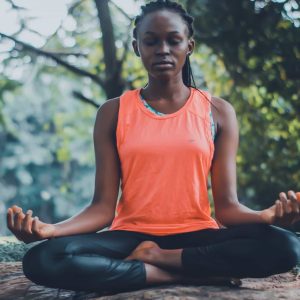
How Many Components of Fitness Are There?
Are you wondering how many components of fitness exist? If you’re looking to get fit, understanding the different components of fitness is a good place to start. This article will explain the various components of fitness and how they contribute to overall health and wellbeing. Read on to learn more!
List of Content
- 1. Introduction: What is Fitness?
- 2. Components of Physical Fitness
- 3. Cardiovascular Fitness
- 4. Muscular Strength & Endurance
- 5. Flexibility
- 6. Balance and Coordination
- You Ask, I answer

1. Introduction: What is Fitness?
Fitness is a broad term that refers to a range of activities that improve our physical, mental, and emotional well-being. It involves a combination of diet and exercise, as well as other lifestyle factors such as sleep and stress management. Fitness can be beneficial to people of all ages and physical abilities, helping them to reach their physical and mental peak.
Fitness can encompass strength, endurance, balance, flexibility, and coordination. Depending on your goals, you can choose one or several components of fitness to focus on. For instance, you might focus on developing muscle strength with weightlifting, or you might focus on flexibility through yoga or Pilates. You can also take a more holistic approach to fitness by incorporating several activities into your routine.
Physical activities such as running, swimming, aerobics, cycling, and hiking are all great forms of fitness. Strength-training activities like weightlifting and bodyweight exercises are also important for overall health and fitness. Additionally, stretching and yoga are great activities for increasing flexibility and improving balance.
No matter your age, physical ability, or goals, there is an activity out there that can help you improve your fitness. Try different activities to see what works best for you and your lifestyle.And don’t forget that proper nutrition and rest are also essential for staying fit and healthy.

2. Components of Physical Fitness
Physical fitness is an important factor when it comes to having a healthy body and lifestyle. It affects your body’s stamina, strength, and flexibility. To maintain optimal physical fitness, there are different components to consider:
Cardiovascular endurance: Cardiovascular endurance is an important part of physical fitness because it is responsible for the health of your heart and lungs. It enables the body to take in and transport oxygen more efficiently. To improve your cardiovascular endurance, you can engage in activities such as jogging, biking, swimming, and aerobic exercises.
Muscular strength and endurance:Muscular strength and endurance refers to the ability of your muscles to exert force, and sustain it over a period of time. Engaging in weight training, using resistance bands, and doing push-ups, sit-ups, and squats consistently can help improve your muscular strength and endurance.
Flexibility:Flexibility is the ability of your muscles and joints to bend and stretch in a full range of motion. Activities such as stretching, yoga, and Pilates can help improve flexibility. Stretching, when done regularly, can help reduce the risk of injury and promote good posture.
Body Composition:Body composition refers to the amount of fat and muscle in your body. An ideal body composition is one that is lean, with little or no fat and strong, well-developed muscles. Eating a healthy diet and engaging in activities such as strength training and interval training can help improve your body composition.
3. Cardiovascular Fitness
refers to the ability of the heart, lungs, and circulatory system to transport oxygen throughout the body, enabling it to sustain physical activity for longer periods of time. It is an important part of the overall fitness equation.
The best way to increase your is to do some form of aerobic exercise regularly. This could include activities such as jogging, swimming, cycling, and playing sports such as basketball or soccer. It is recommended to get in at least 150 minutes of moderate-intensity aerobic exercise per week.
Benefits of
- Lowers the risk of developing high blood pressure, heart disease, and stroke
- Improves your endurance and stamina
- Improves your strength, speed, and agility
- Improves your coordination and balance
- Boosts your mood and reduces stress
In order to get the most out of your aerobic workouts, it is important to make sure you are warming up and cooling down properly. This will help your body adjust to the physical activity and also help reduce your risk of injury. It is also a good idea to give your body a break every now and then, so don’t push yourself too hard. A balanced and consistent approach is best.
4. Muscular Strength & Endurance
Muscular strength and endurance are both important components of physical fitness. They’re necessary for everyday activities like getting out of bed and lifting groceries off the floor.
Muscular Strength – Muscular strength refers to the amount of force that your muscles can produce in one burst. It’s essential for most day-to-day activities like carrying your belongings up the stairs. To increase your muscular strength, focus on resistance training exercises like lifting weights and dynamic resistance exercises like squats and push-ups.
Muscular Endurance – On the other hand, muscular endurance is the ability of your muscles to stay contracted over long periods of time. It’s important for activities like jogging, cycling, and swimming, as well as activities like digging, mowing the lawn, and cleaning the house. To increase muscular endurance, focus on activities like running, biking, and swimming. You can also use lighter resistance with more repetitions.
Including both muscular strength and endurance in your exercise routine will help you reach your fitness goals. Here are a few tips to help you get started:
- Develop a plan with a balance of both muscular strength and endurance exercises
- Start slowly and gradually increase the intensity and duration of your workouts
- Give your body time to rest and recover between workouts
- Enlist the help of a personal trainer or join a fitness class to stay motivated and accountable
5. Flexibility
When looking for a job, it is important to consider the available within it. offers benefits for both the employer and employee, from reduced absenteeism to an improved work-life balance.
Travel
If you value your weekends or have other commitments, check if there is any requirement to do travel, and how much of it you will need to do. You may be required to go into an office for certain projects, but for the most part, some roles — such as those in programming or research and development — may require very little in the way of travelling.
Working Hours
Many jobs offer the opportunity to work flexitime, or set your own hours. If this is a priority for you as an employee, it is worth asking prospective employers regarding this option. Furthermore, some employers are now willing to offer a four-day week or an extra day of paid leave as a way of providing further .
Remote Working
More companies and organisations are beginning to offer the option of remote working, either on a full or part-time basis. Working remotely can provide a great degree of to any role, as well as reducing your travel expenses. If you are comfortable with the idea of working from a home office, make sure to enquire about a prospective employer’s position.
Flexible Benefits
Finally, many companies now offer flexible benefits packages. These may include things such as healthcare or gym memberships, cycle to work schemes, and childcare vouchers to name a few. If these kinds of options are a priority for you, make sure to ask potential employers about them. Benefits such as these can provide you with a great balance of functional and financial .
6. Balance and Coordination
are the abilities to maintain and control your body position. They are fundamental to many everyday activities, such as walking, running, jumping, and lifting.
If you have good , you should be able to control your movements more precisely and with less energy, and be able to quickly react to a quick change in the environment.
Poor can lead to injuries and reduce your ability to move without effort or at speed. It could also be a sign of an underlying medical condition.
With proper training, you can improve your . Here are some of the exercises that can help:
- Work at a single leg: Single-leg balance exercises help improve coordination and balance since you’re working only one limb at a time, such as with a single-leg bridge, single-leg squat or single-leg Romanian deadlift.
- Practice walking on your toes and heels: Exercising on an unstable surface helps improve . Walking on your toes or heels across a balance beam, for example, can also help you maintain a better posture.
- Try coordination drills: Coordination drills, such as quick jumps over an agility ladder, will improve your . They also challenge your muscles, tendons, and ligaments.
- Train your core: Core strength is essential to improve . Regularly doing ab exercises, like crunches, leg raises, plank, and bike crunches can help you develop strong core muscles.
You Ask, I answer
Q. What components of fitness are there?
A. Generally, there are six components of fitness – cardiovascular endurance, muscular strength, muscular endurance, flexibility, body composition, and power.
Q. What are the components of physical fitness?
A. Physical fitness is composed of the six components of fitness: cardiovascular endurance, muscular strength, muscular endurance, flexibility, body composition, and power.
Q. How are these components of physical fitness related?
A. The components of physical fitness are all related in that, together, they allow us to perform the necessary level of physical activity for our daily lives. Each component can be improved individually, as well as together, to reach a higher level of physical fitness.
Q. What is cardiovascular endurance?
A. Cardiovascular endurance is your body’s ability to perform aerobic exercise, such as running, for an extended period of time. This component of fitness is important for good health and helping to maintain a healthy weight.
Q. What is muscular strength?
A. Muscular strength is the amount of force generated by a muscle or a group of muscles during a single effort, such as lifting a heavy weight. Having strong muscles is important for a variety of activities, including daily living.
Q. What is muscular endurance?
A. Muscular endurance is the ability of the muscles to work for an extended period of time without becoming fatigued. This component of fitness is important for sports and activities that require a high level of sustained effort.
Q. What is flexibility?
A. Flexibility is the ability of the body’s joints to move through their full range of motion. Having good flexibility is important for activities such as yoga and martial arts, and it also helps to prevent injury.
Q. What is body composition?
A. Body composition is the ratio of fat to lean body mass in the body. Having a healthy body composition is important for overall health and well-being.
Q. What is power?
A. Power is a combination of speed and strength. This component of fitness is important for activities such as sprinting and jumping. Having high levels of power and strength can help athletes to excel in their sport.
Understanding all the components of physical fitness is an important first step in developing and maintaining a healthy lifestyle. With each component working in tandem, you can have a positive impact on your ease of movement, quality of life and overall freedom of movement. So, take advantage of this knowledge and incorporate physical fitness into your daily routine to experience the maximum benefits of peak fitness.


